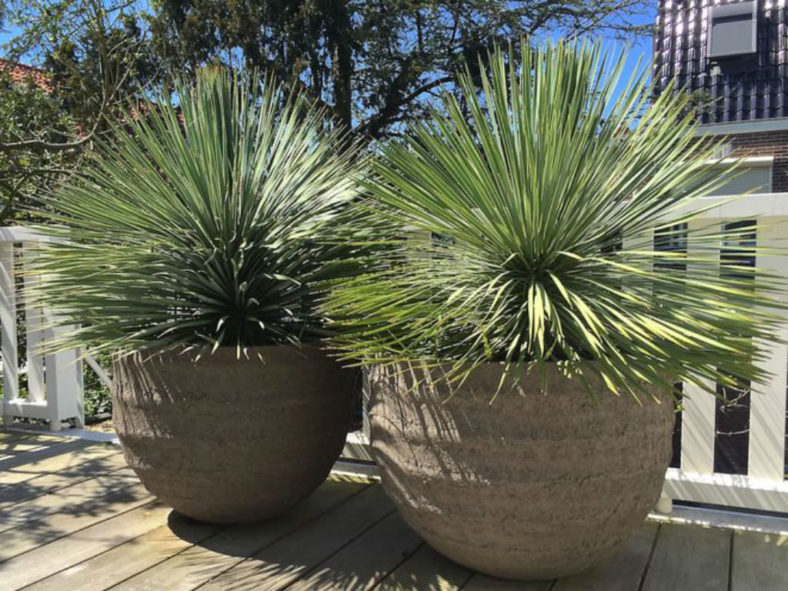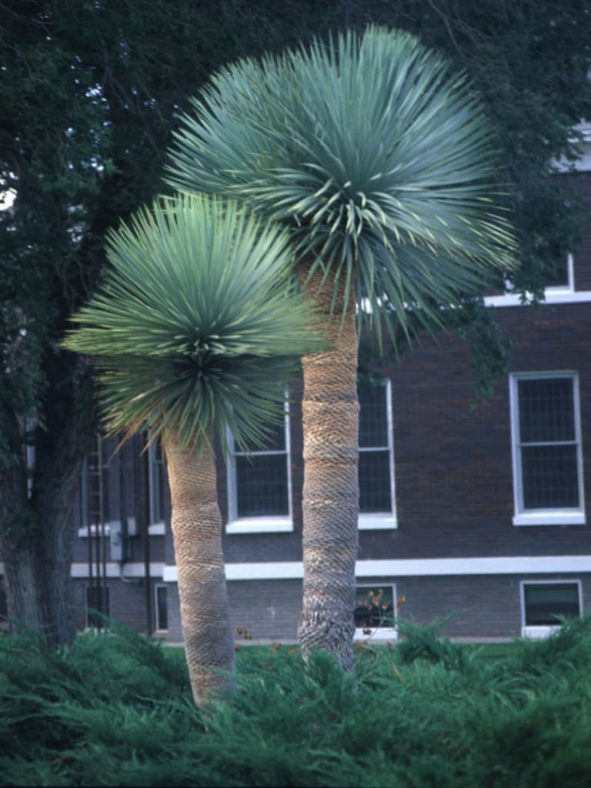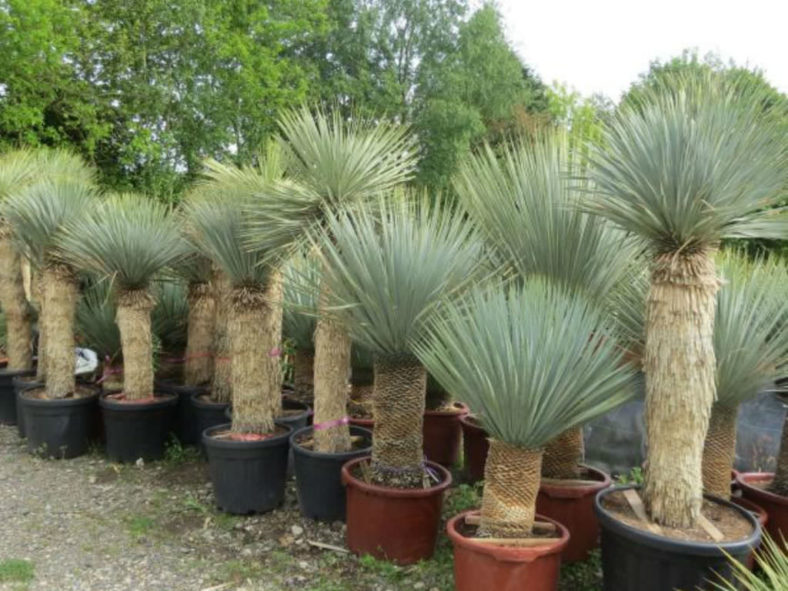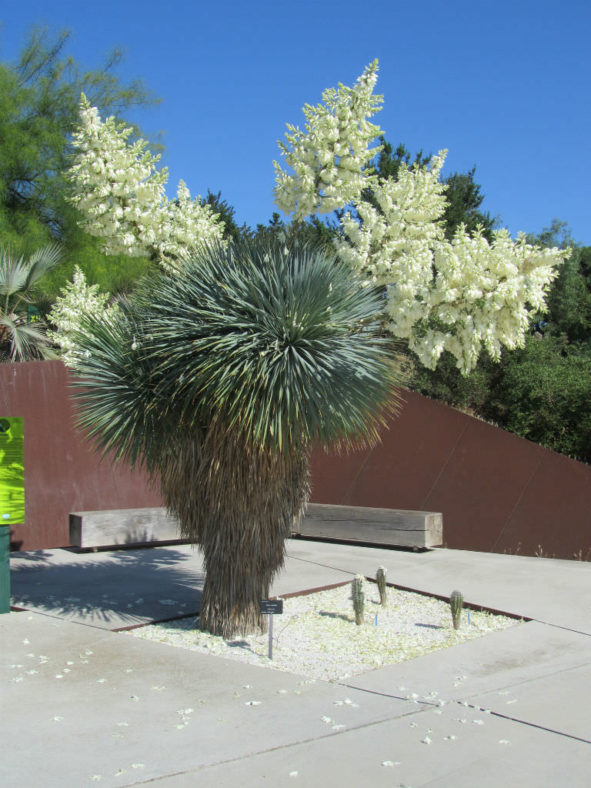Scientific Name
Yucca rostrata Engelm. ex Trel.
Common Name(s)
Beaked Yucca, Big Bend Yucca
Synonym(s)
Yucca linearis, Yucca rostrata var. linearis, Yucca sostrata var. linearis
Scientific Classification
Family: Asparagaceae
Subfamily: Agavoideae
Genus: Yucca
Etymology
The specific epithet "rostrata" (pronounced "ro-STRAY-tuh") means "beaked, beak-like" and refers either to the shape of the flower buds or appendages on the fruit of this species.
Origin
Yucca rostrata is native to the United States (Texas) and Mexico (Chihuahua and Coahuila). It grows on rocky slopes and ridges at elevations ranging between 980 and 2,620 feet (300 and 800 m).
Description
Yucca rostrata is a tree-like plant with one or more upright, woody stems and an approximately hemispherical crown of narrow leaves at the top. It slowly grows, reaching a height of 15 feet (4.5 m). The leaves are stiff, tapering to a sharp tip, and can measure up to 24 inches (60 cm) long and 0.7 inches (1.7 cm) wide. They are slightly waxy, pale bluish-green with yellow margins. The old leaves fall off, leaving a fibrous, soft gray covering on the trunk.
Large clusters of white flowers appear on a yellow-orange, usually about 3.3 feet (1 m) tall stalk that rises above the foliage on mature plants in late spring. The purplish fruits are erect, ovoid to ellipsoid, with a curved beak at the tip, and can grow up to 2.8 inches (7 cm) long and 1 inch (2.5 cm) in diameter.

How to Grow and Care for Yucca rostrata
Hardiness: USDA hardiness zones 5a to 10b: from -20°F (-28.9°C) to 40°F (4.4°C).
Under the right conditions, Yuccas are not difficult plants to grow. They tend to thrive on a bit of neglect rather than too much attention. They are especially easy to overwater, and soggy stems indicate too much water. The best conditions for Yuccas include a sunny corner with relatively low humidity. They are not prone to many pests, although scale can be an issue. Over time, plants will typically lose their lower leaves (in nature, they droop, forming a skirt around the trunk), giving the plant a pleasant "tree-like" appearance.
Yuccas are relatively slow-growing plants that should only need to be repotted every other year. They do well slightly pot-bound as long as they don't become heavy enough to tip over their containers. Repotting larger plants can be difficult, so they can be refreshed with new potting soil by digging out the top 2 inches (5 cm) of the container and adding new soil. During typical repotting, remove the plant from its container and go up one container size. Always use fresh potting soil.
Learn more at How to Grow and Care for Yucca.
Links
- Back to genus Yucca
- Succupedia: Browse succulents by Scientific Name, Common Name, Genus, Family, USDA Hardiness Zone, Origin, or cacti by Genus
Photo Gallery
Click on a photo to see a larger version.


